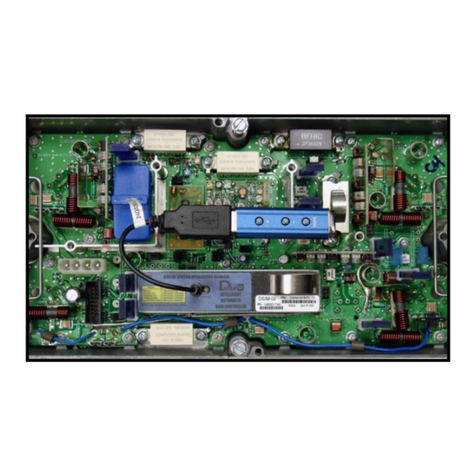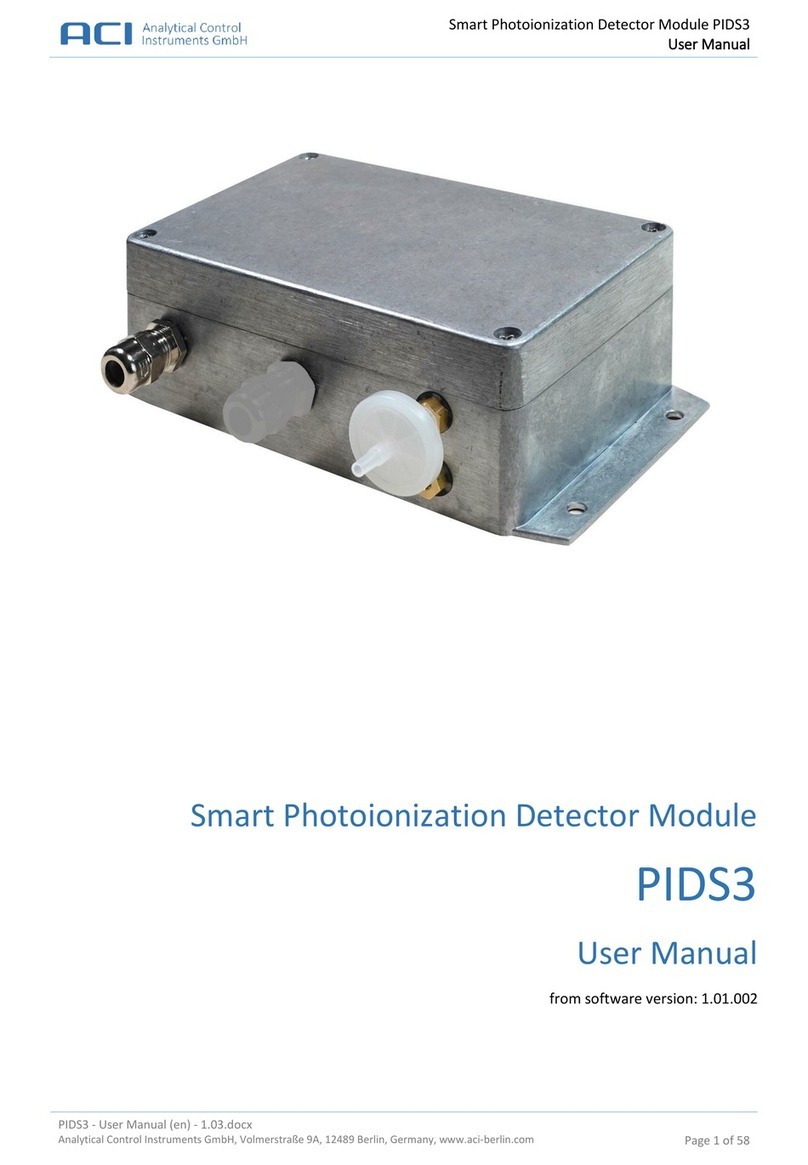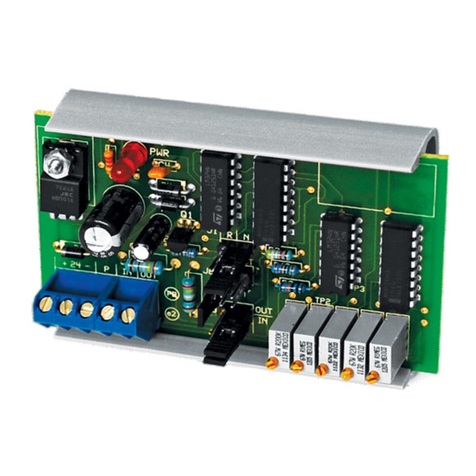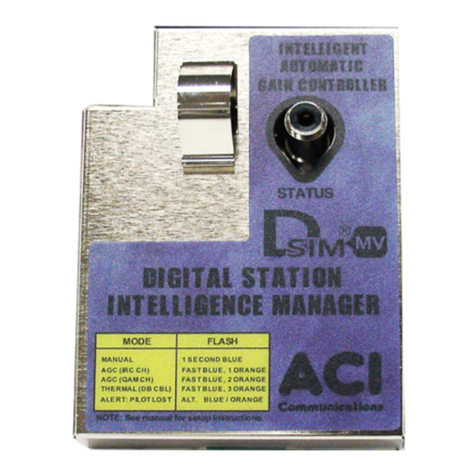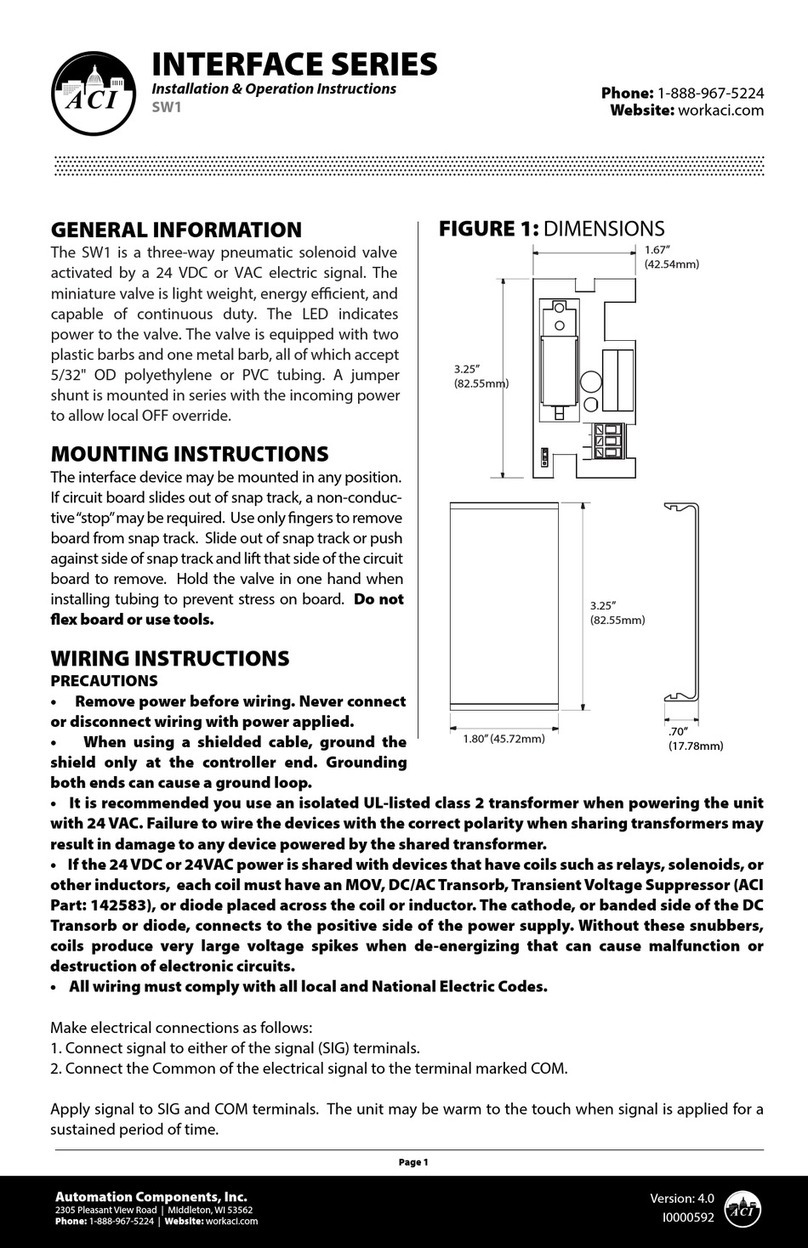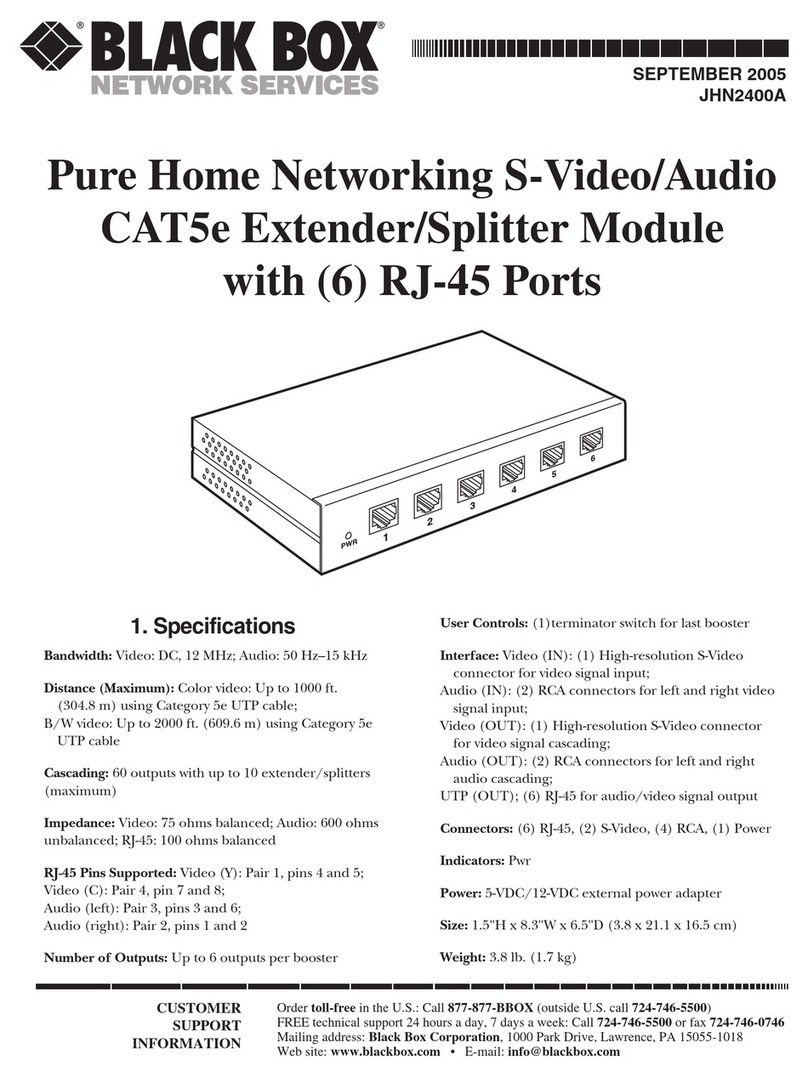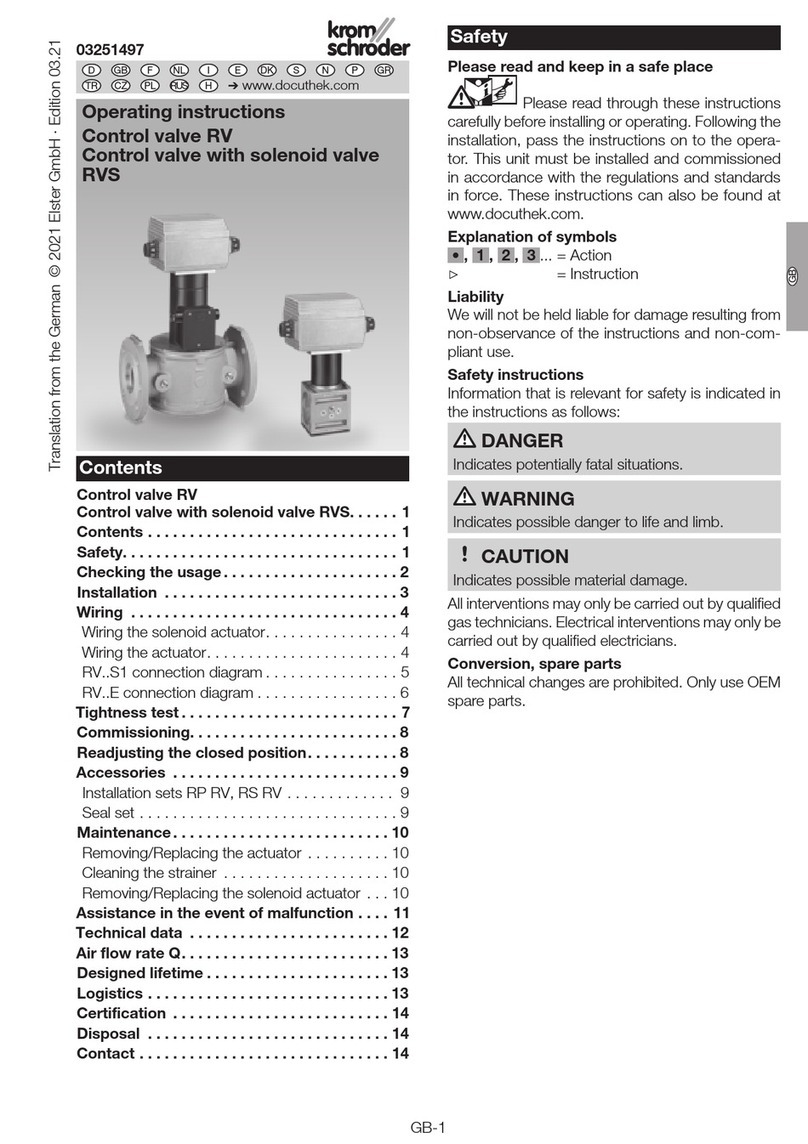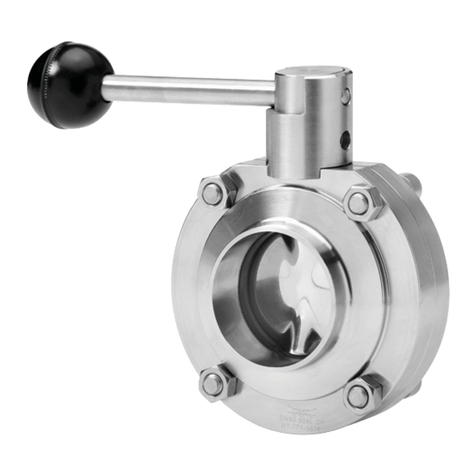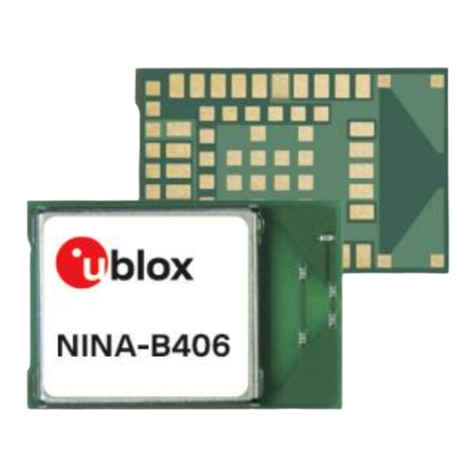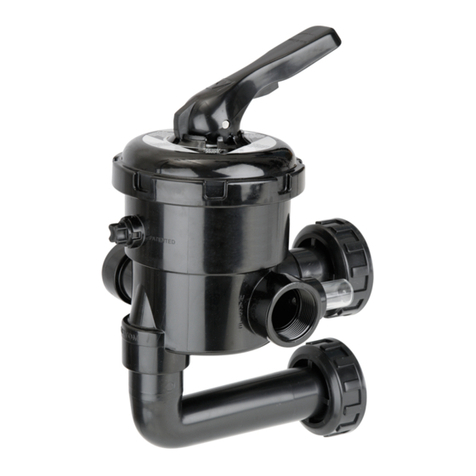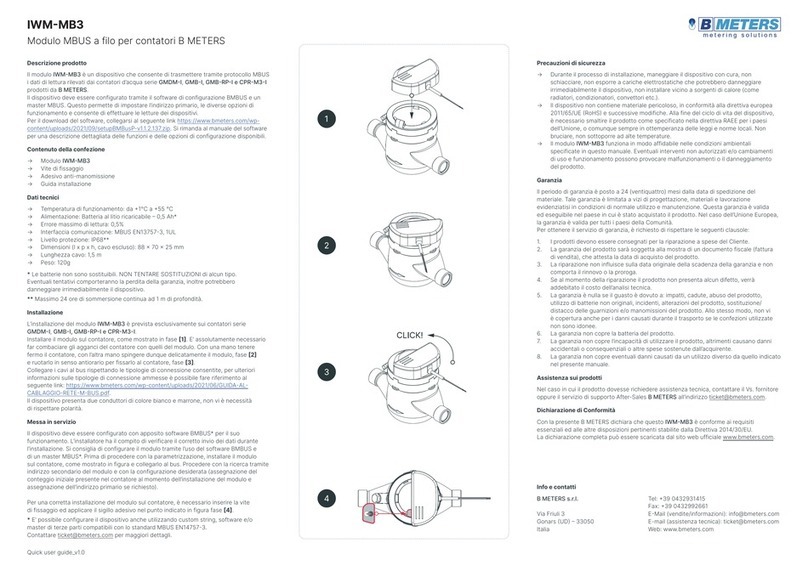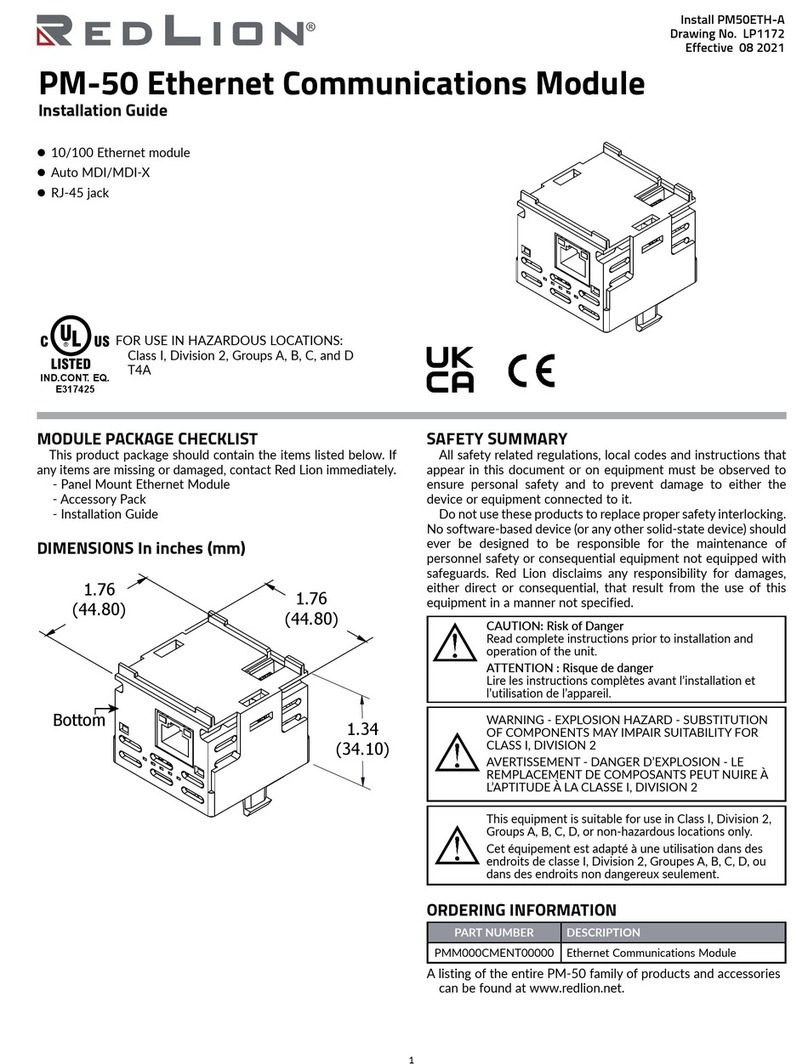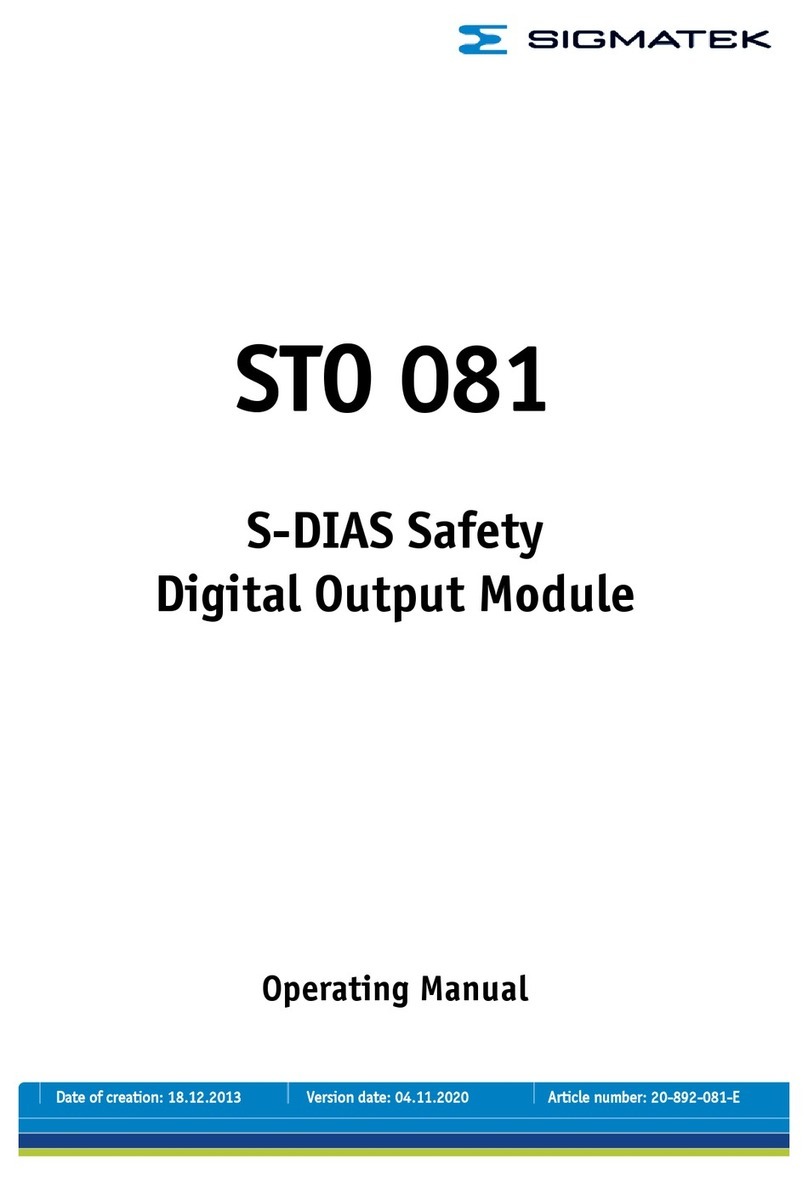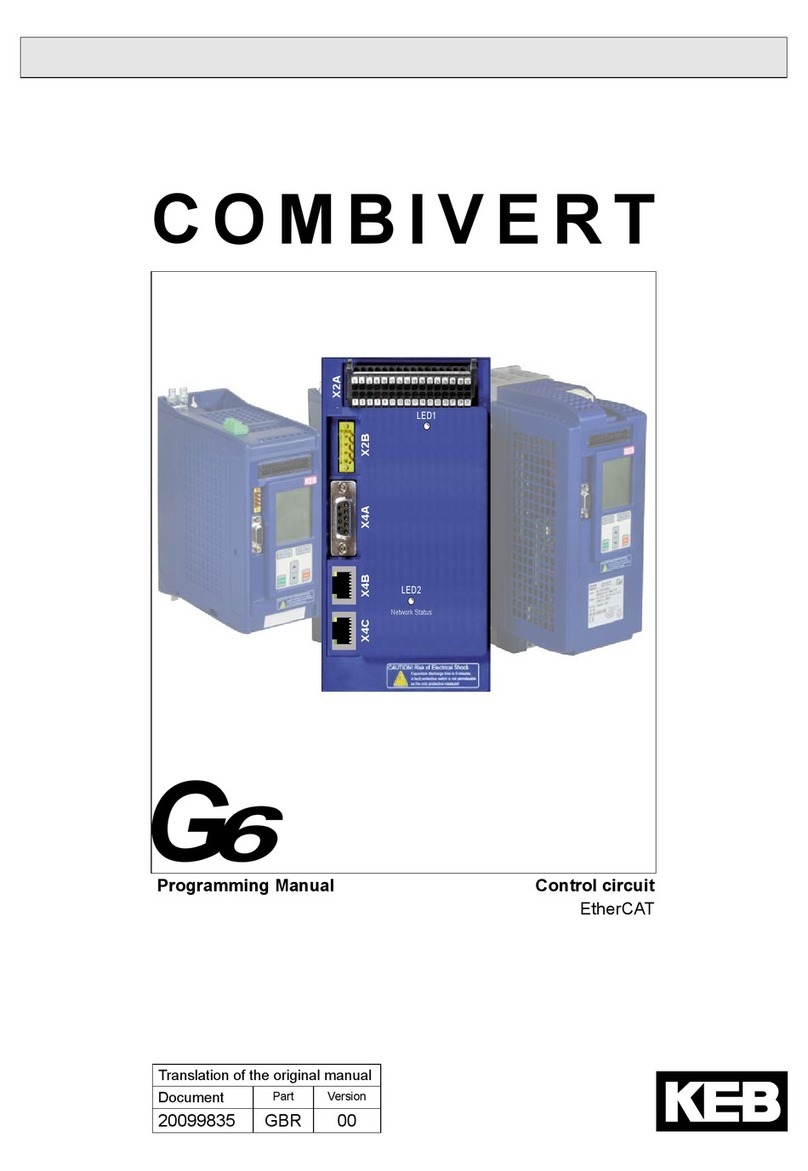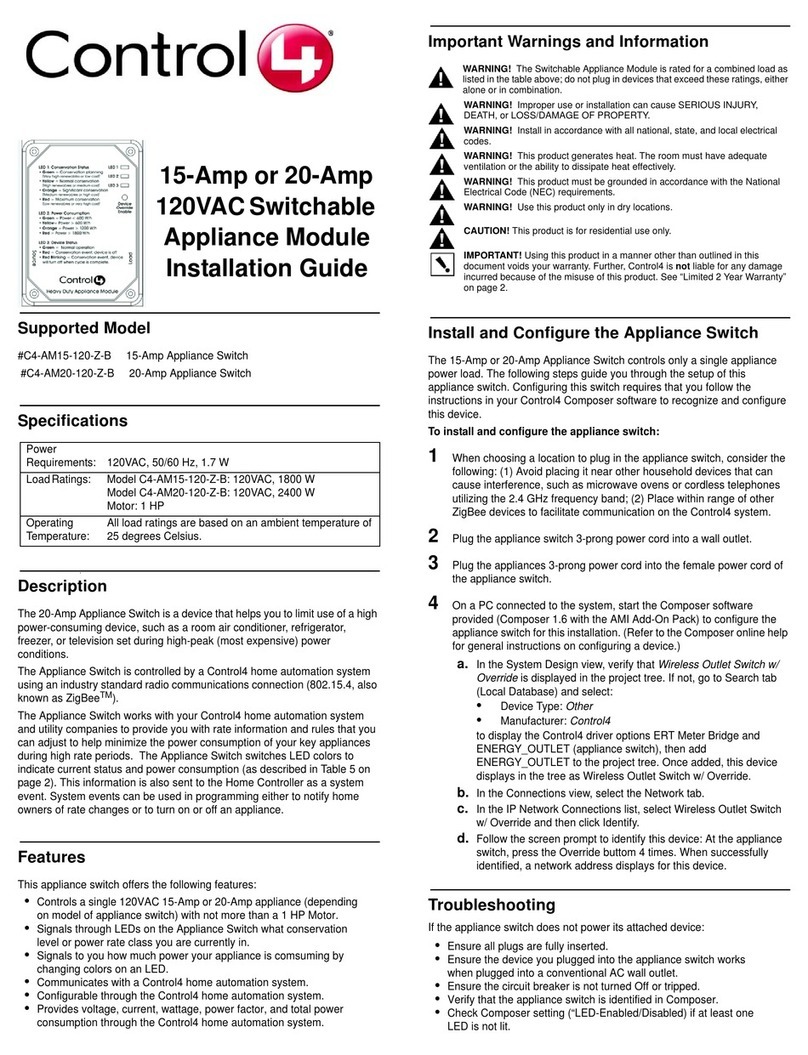aci PIM CPN User manual

Photoionization Detector Module PIM CPN
User Manual
PIM_CPN - User Manual (en) - 1.08.docx
Analytical Control Instruments GmbH, Volmerstraße 9A, 12489 Berlin, Germany, www.aci-berlin.com
Page 1 of 48
Photoionization Detector Module
PIM CPN
User Manual
from software version: 1.04.050

Photoionization Detector Module PIM CPN
User Manual
PIM_CPN - User Manual (en) - 1.08.docx
Analytical Control Instruments GmbH, Volmerstraße 9A, 12489 Berlin, Germany, www.aci-berlin.com
Page 2 of 48
Analytical Control Instruments GmbH
Volmerstraße 9A
D-12489 Berlin
Germany
© Analytical Control Instruments GmbH. All rights reserved.

Photoionization Detector Module PIM CPN
User Manual
PIM_CPN - User Manual (en) - 1.08.docx
Analytical Control Instruments GmbH, Volmerstraße 9A, 12489 Berlin, Germany, www.aci-berlin.com
Page 3 of 48
1Content
2 General.........................................................................................................................................................5
3 Technical data..............................................................................................................................................6
3.1 Absolute maximum ratings..................................................................................................................7
3.2 Electrical characteristics.......................................................................................................................7
4 Safety and usage instructions ......................................................................................................................8
4.1 Terms and Symbols..............................................................................................................................8
4.2 Correct use...........................................................................................................................................9
4.3 Liability Information.............................................................................................................................9
4.4 Safety and Precautionary Measures to be adopted ..........................................................................10
4.5 Permanent Instrument Warranty ......................................................................................................11
5 The Module................................................................................................................................................12
5.1 Connection overview .........................................................................................................................12
5.2 Electrical connections ........................................................................................................................13
5.3 Module connectors............................................................................................................................14
5.3.1 X1 –Module connector..............................................................................................................14
5.3.2 X2 –Lamp connector .................................................................................................................14
5.4 Gas supply..........................................................................................................................................15
6 Installation hints ........................................................................................................................................17
7 Operation...................................................................................................................................................18
7.1 Using the module...............................................................................................................................18
7.2 Measurement values .........................................................................................................................20
7.3 Measurement result resolution.........................................................................................................20
8 Measurement config..................................................................................................................................21
8.1 Calibration method............................................................................................................................21
8.2 Gas identification and response factor..............................................................................................21
9 Calibration..................................................................................................................................................22
10 UART Communication............................................................................................................................24
10.1 Baudrate selection .............................................................................................................................24
10.2 Message frame...................................................................................................................................25
10.2.1 Checksum calculation.................................................................................................................26
10.2.2 Message section format.............................................................................................................27
10.3 Module commands ............................................................................................................................28
10.3.1 Module information commands................................................................................................28
10.3.2 Module control commands........................................................................................................29

Photoionization Detector Module PIM CPN
User Manual
PIM_CPN - User Manual (en) - 1.08.docx
Analytical Control Instruments GmbH, Volmerstraße 9A, 12489 Berlin, Germany, www.aci-berlin.com
Page 4 of 48
10.3.3 Module data commands............................................................................................................30
10.3.4 Module lamp commands ...........................................................................................................33
10.3.5 Module I2C commands ..............................................................................................................33
11 I2C Communication................................................................................................................................34
11.1 Data transfer......................................................................................................................................34
11.2 Data register format...........................................................................................................................35
11.3 Registers.............................................................................................................................................35
11.3.1 Module information register .....................................................................................................35
11.3.2 Module control and status register ...........................................................................................35
11.3.2.1 Module control register data.............................................................................................36
11.3.2.2 Module status register data...............................................................................................37
11.3.3 Module measurement values data registers .............................................................................38
11.3.4 Module measurement config data registers..............................................................................38
11.3.5 Module calibration data registers..............................................................................................38
11.3.6 Module lamp information data registers...................................................................................39
12 Mechanical Drawings.............................................................................................................................40
13 Maintenance and Service.......................................................................................................................41
13.1 How To –Replace the PID lamp/front isolation/sensor block...........................................................42
13.2 How To –Clean the PID Lamp............................................................................................................43
13.3 Maintenance Intervals .......................................................................................................................43
14 Ordering information.............................................................................................................................45
15 Spare parts and Accessories ..................................................................................................................46
16 Contact...................................................................................................................................................48

Photoionization Detector Module PIM CPN
User Manual
PIM_CPN - User Manual (en) - 1.08.docx
Analytical Control Instruments GmbH, Volmerstraße 9A, 12489 Berlin, Germany, www.aci-berlin.com
Page 5 of 48
2General
The company Analytical Control Instruments GmbH (hereinafter the 'manufacturer') provides with the PIM
CPN module (hereinafter the 'module') a complete photoionization detector as an OEM module.
The module detects volatile organic compounds (VOC) with an ionization potential < 10.6 eV in air.
The ionization source is a high performance vacuum ultraviolet (VUV) hollow cathode lamp with an energy of
10.6 eV. With its ceramic discharge channel, the stability is improved and a longer service life of up to 15 000
hours and more will be achieved.
With its built-in electronics and microcontroller as well as a combined humidity/temperature sensor, it
provides a flexible and easy to use adaptation into your measurement system. The module comes with a
built-in linearization and temperature/humidity compensation. Built-in barometric pressure sensors offers
later compensation and gas flow monitoring.

Photoionization Detector Module PIM CPN
User Manual
PIM_CPN - User Manual (en) - 1.08.docx
Analytical Control Instruments GmbH, Volmerstraße 9A, 12489 Berlin, Germany, www.aci-berlin.com
Page 6 of 48
3Technical data
*
The indicated values were obtained under standardized conditions with 10.6eV lamp.
Test gas was Isobuten in synthetic air.
Detector principle
VUV-Photoionization with 10.6 eV hollow cathode lamp
with Ceramic Discharge Channel technology
and integrated high voltage supply
(optional 11.8 eV and 10.0 eV lamp available)
Detection ranges
0 …2 000 ppm Isobutene *
Lower detection limit
Typical 10 ppb *
Signal resolution
Dynamic up to 0.01 ppm
Response time
T90 < 10 s *
Influence of humidity
and temperature
compensated between 0 ... 50 °C and 0 …90 % rH
Operating conditions
-10 …60 °C
0 …95 % rH, non-condensing
90 to 110 kPa
Storage conditions
-20 …60 °C
0 …95 % rH, non-condensing
90 to 110 kPa
Gas flow
required 200 … 300 ml/min (monitored)
dust and water protection filter at sample inlet required
PID lamp life time
Min. 8 000 hours *, typical more than 15 000 h for 10,6eV lamp
Power supply
3.00 VDC to 5.25 VDC
max. 200 mA peak, typical 90 mA @ 3.30 VDC
Digital interface
UART TTL (at power supply level)
I2C TTL (at power supply level)
Calibration
Two point gas calibration
Dimension, weight
54 mm x 39 mm x 28 mm (L x W x H), about 60 g
Warranty
2 years, except for components in gas path and wearing parts

Photoionization Detector Module PIM CPN
User Manual
PIM_CPN - User Manual (en) - 1.08.docx
Analytical Control Instruments GmbH, Volmerstraße 9A, 12489 Berlin, Germany, www.aci-berlin.com
Page 7 of 48
3.1 Absolute maximum ratings
Parameter
Min
Max
VCC
3.00 VDC
5.25 VDC
Digital interface
- 0.50 VDC
VCC level + 0.50 VDC,
5.25 VDC
3.2 Electrical characteristics
Digital interface
Parameter
Min
Max
V in high
VCC level - 400 mV
V in low
600 mV,
with internal pull up min. 5 kΩ
V out high
VCC level x 0.67,
at load 20 µA,
internal pull up typ. 10 kΩ
V out low
600 mV at load 1mA

Photoionization Detector Module PIM CPN
User Manual
PIM_CPN - User Manual (en) - 1.08.docx
Analytical Control Instruments GmbH, Volmerstraße 9A, 12489 Berlin, Germany, www.aci-berlin.com
Page 8 of 48
4Safety and usage instructions
4.1 Terms and Symbols
In this manual, certain common terms and symbols are used to warn you of dangers or to give you cautions
that are important in avoiding injury or damage. Observe and follow these cautions and regulations to avoid
accidents and damage. These terms and symbols are explained below.
DANGER
Indicates a hazardous situation, which, if not avoided, WILL result in death or serious injury.
WARNING
Indicates a hazardous situation, which, if not avoided, COULD result in death or serious injury.
CAUTION
Indicates a hazardous situation, which, if not avoided, MAY result in minor or moderate
injury.
NOTICE
Indicates risk of property damage.
Usage
Indicates a helpful information, hint or recommendation.

Photoionization Detector Module PIM CPN
User Manual
PIM_CPN - User Manual (en) - 1.08.docx
Analytical Control Instruments GmbH, Volmerstraße 9A, 12489 Berlin, Germany, www.aci-berlin.com
Page 9 of 48
4.2 Correct use
WARNING
This product may be supporting life and health. Inappropriate use, maintenance or servicing
may affect the function of the device and thereby seriously compromises the user`s life.
Before use, the product operability must be verified.
The product must not be used if the function test is unsuccessful, it is damaged, a competent
servicing/maintenance has not been made as required, genuine manufacturers spare parts
have not been used.
It is imperative to read this operating manual and observed when using the product. In particular, the safety
instructions, as well as the information for the use and operation of the product, must be carefully read and
observed. Furthermore, the national regulations applicable in the user´s country must be taken into account
for a safe use.
Alternative use, or use outside this specification will be considered as non-compliance. This also applies
especially to unauthorized alterations to the product and to commissioning work that has not been carried
out by manufacturer or authorized persons.
4.3 Liability Information
The manufacturer accepts no liability in cases where the product has been used inappropriately or not as
intended or if seal is broken. The selection and use of the product are the exclusive responsibility of the
individual operator. Product liability claims, warranties also as guarantees made by the manufacturer with
respect to the product are voided, if it is not used, serviced or maintained in accordance with the
instructions in this manual.

Photoionization Detector Module PIM CPN
User Manual
PIM_CPN - User Manual (en) - 1.08.docx
Analytical Control Instruments GmbH, Volmerstraße 9A, 12489 Berlin, Germany, www.aci-berlin.com
Page 10 of 48
4.4 Safety and Precautionary Measures to be adopted
WARNING
The following safety instructions must be observed implicitly. Only in this way can the safety
and health of the individual operators, and the correct functioning of the instrument, be
guaranteed.
•The module described in this manual must be installed, operated and maintained in strict
accordance with their labels, cautions, instructions, and within the limitations stated.
•The module is designed to detect volatile organic compounds or vapors in air.
•The module is intended for installation in a higher-level device and not as standalone instrument.
•The module must be installed in thermal isolated environment to achieve the full measurement
performance.
•The only absolute method to ensure proper overall operation of the device is to check it with a
known concentration of the gas for which it has been calibrated.
Consequently, calibration checks must be included as part of the routine inspection of the system.
•As with all modules of these types, high levels of, or long exposure to, certain compounds in the
tested atmosphere could contaminate the sensor. In atmospheres where the module may be
exposed to such materials, calibration must be performed frequently to ensure that the operation is
dependable and display indications are accurate.
•Use only genuine manufacture replacement parts when performing any maintenance procedures
provided in this manual. Failure to do so may seriously impair instrument performance. Repair or
alteration of the device, beyond the scope of these maintenance instructions or by anyone other
than an authorized manufacture service personnel, could cause the product to fail to perform as
designed.
•The module as is is NOT designed for applications in hazardous areas.
•The functionality of the module will be influenced by pollution. Checks for dust deposits must be
done at regular intervals.

Photoionization Detector Module PIM CPN
User Manual
PIM_CPN - User Manual (en) - 1.08.docx
Analytical Control Instruments GmbH, Volmerstraße 9A, 12489 Berlin, Germany, www.aci-berlin.com
Page 11 of 48
4.5 Permanent Instrument Warranty
Seller warrants that this product is designed and manufactured to the latest internationally recognized
standards by manufacturer under a quality management system that is certified to ISO 9001. As such the
manufacturer warrants that this product will be free from defective parts and workmanship and will repair
or (at its option) replace any instruments which are or may become defective under proper use within
twenty four [24] months from date of commissioning by an approved manufacturer representative. This
warranty does not cover wearing parts, i.e. parts inside the gas way like lamp and sensor chamber or
damage caused by accident, abuse or abnormal operating conditions.
Defective module must be returned to manufacturer premises accompanied by a detailed description of any
issue. Where return of module is not practicable manufacturer reserves the right to charge for any site
attendance where any fault is not found with the equipment. Manufacturer shall not be liable for any loss or
damage whatsoever or howsoever occasioned which may be a direct or indirect result of the use or
operation of the contract goods by the buyer or any party.
This warranty covers modules and parts sold to the buyer only by authorized distributors, dealers and
representatives as appointed by manufacturer. The warranties set out in this clause are not pro rata, i.e. the
initial warranty period is not extended by virtue of any works carried out there under.
In no event will manufacturer be liable for any incidental damages, consequential damages, special
damages, punitive damages, statutory damages, indirect damages, loss of profits, loss of revenues, or loss of
use, even if informed of the possibility of such damages. Manufacturer is liability for any claims arising out of
or related to this product will in no case exceed the order value. To the extent permitted by applicable law,
these limitations and exclusions will apply regardless of whether liability arises from breach of contract,
warranty, tort (including but not limited to negligence), by operation of law, or otherwise.

Photoionization Detector Module PIM CPN
User Manual
PIM_CPN - User Manual (en) - 1.08.docx
Analytical Control Instruments GmbH, Volmerstraße 9A, 12489 Berlin, Germany, www.aci-berlin.com
Page 12 of 48
5The Module
5.1 Connection overview
Connection diagram
PID sensor
Controller
Pressure and
flow detection
Temperature and
humidity sensor
PID lamp
VCC 3.00 .. 5.25 VDC
UART, I2C (VCC level)
Lamp supply VCC, control
Gas out
Gas in

Photoionization Detector Module PIM CPN
User Manual
PIM_CPN - User Manual (en) - 1.08.docx
Analytical Control Instruments GmbH, Volmerstraße 9A, 12489 Berlin, Germany, www.aci-berlin.com
Page 13 of 48
5.2 Electrical connections
Wiring diagram VCC level equal to interface level
Wiring diagram VCC level different to interface level
PID module
Power supply
µController
UART TxD
UART RxD
I2C SCL
I2C SDA
UART TxD
UART RxD
I2C SCL
I2C SDA
Level shift
PID module
Power supply
µController
UART TxD
UART RxD
I2C SCL
I2C SDA
DC / DC
UART TxD
UART RxD
I2C SCL
I2C SDA
Level
module
Level
µC

Photoionization Detector Module PIM CPN
User Manual
PIM_CPN - User Manual (en) - 1.08.docx
Analytical Control Instruments GmbH, Volmerstraße 9A, 12489 Berlin, Germany, www.aci-berlin.com
Page 14 of 48
5.3 Module connectors
Module top view
5.3.1 X1 –Module connector
Connector
Type
Manufacturer : JST, part number : BM06B-SRSS-TB(LF)(SN)
X1 –1
VCC
Module Supply Voltage ( input )
X1 –2
GND
Ground
X1 –3
TxD
Module UART Transmitter Line ( output, internal pull up 10 kΩ)
X1 –4
RxD
Module UART Receiver Line ( input, internal pull up min. 5 kΩ)
X1 –5
SDA
Module I2C Serial Data Line ( internal pull up 10 kΩ )
X1 –6
SCL
Module I2C Serial Clock Line ( internal pull up 10 kΩ )
5.3.2 X2 –Lamp connector
Lamp control connector.
GAS
IN
X1 ‘Sensor’
1
Lamp
GAS
OUT
X2 ‘Lamp’
1

Photoionization Detector Module PIM CPN
User Manual
PIM_CPN - User Manual (en) - 1.08.docx
Analytical Control Instruments GmbH, Volmerstraße 9A, 12489 Berlin, Germany, www.aci-berlin.com
Page 15 of 48
5.4 Gas supply
NOTICE –WATCH THE GAS FLOW
The module requires a uniform gas flow.
Gas must be drawn out of the output in pump operation.
Gas must be free of dust and liquids.
Gas input must be nearly have ambient pressure (deviation recommended less than 20 mBar)
in pump operation.
Gas flow scheme in pump operation
NOTICE –WATCH THE GAS FLOW
Constant flow from active gas source will need (depending from pollution of dust and water
filter) 20 mbar to max 100 mbar overpressure to realise 200 .. 300 ml/min flow through
module.
Gas flow scheme with constant flow of measurement gas source at gas input
Dust and liquids must be kept away from module internal gas paths.
The pump must draw out the gas from the PID module. Thereby gas and particle contamination from pump
is prevented.
The module comes with an integrated gas flow monitoring. The current gas flow indicator can be readed
with measurement values of UART command and I2C data registers.
PID MODULE
PUMP
DUST AND WATER
PROTECTION FILTER
GAS
IN
GAS
OUT
PID MODULE
DUST AND WATER
PROTECTION FILTER
GAS
IN
GAS
OUT
200 .. 300 ml/min
MEASUREMENT
GAS ONLY SOURCE

Photoionization Detector Module PIM CPN
User Manual
PIM_CPN - User Manual (en) - 1.08.docx
Analytical Control Instruments GmbH, Volmerstraße 9A, 12489 Berlin, Germany, www.aci-berlin.com
Page 16 of 48
The module status information contains two flow indications :
•‘flow low’ - gas flow too low, measurement result integrity loss and module may be damaged
•‘flow over’ - gas flow too high, measurement result integrity loss

Photoionization Detector Module PIM CPN
User Manual
PIM_CPN - User Manual (en) - 1.08.docx
Analytical Control Instruments GmbH, Volmerstraße 9A, 12489 Berlin, Germany, www.aci-berlin.com
Page 17 of 48
6Installation hints
USAGE
The PID sensor is sensitive against pollution. Use dust and water filter to protect the gas inlet
of the module.
NOTICE –WATCH THE GAS FLOW
The module requires a uniform gas flow.
Do not enter the MEASURE state without appropriate gas flow.
USAGE –PLACE THE MODULES IN A THERMALLY ISOLATED ENVIRONMENT
The PID sensor is sensitive against fast gradients of temperature and humidity. To achieve the
best accuracy it is recommended that the module is place in a thermal insulated
environment.
NOTICE
The module contains electronic components, which react sensitively to electrostatic
discharge (ESD). Work on or in the unit must be done only by qualified personal and in full
compliance with the appropriate instructions and pertinent regulations.

Photoionization Detector Module PIM CPN
User Manual
PIM_CPN - User Manual (en) - 1.08.docx
Analytical Control Instruments GmbH, Volmerstraße 9A, 12489 Berlin, Germany, www.aci-berlin.com
Page 18 of 48
7Operation
7.1 Using the module
Operation scheme
After POWER ON the module performs initialization and warmup sequence and enters the IDLE state. In
IDLE state the module is ready to communicate, the lamp is switched off.
Entering the LAMP CHECK state is initiated by sending the appropriate commands. Thereby the lamp is
switched off and on and is tested. On successful lamp test the MEASURE state is entered.
When in MEASURE state the gas flow indicator value should be around 100 %. When low flow is detected for
60 seconds the module enters IDLE state by itself and switches off the lamp.
The lamp check may be repeated at any time by sending the appropriate command.
When in ERROR state the lamp is switched off. The ERROR state can only be left by switch off or reboot the
module by sending the appropriate command.
on failure
INIT
IDLE
LAMP CHECK
Action ‘stop’
or on
low flow
on failure
ERROR
POWER ON
on failure
WARMUP
Action ‘reboot’
Action ‘start’
MEASURE
on failure
WARMUP
Action
‘lamp check’

Photoionization Detector Module PIM CPN
User Manual
PIM_CPN - User Manual (en) - 1.08.docx
Analytical Control Instruments GmbH, Volmerstraße 9A, 12489 Berlin, Germany, www.aci-berlin.com
Page 19 of 48
The procedure step by step:
•check the appropriate gas flow
•power on the module
•wait for IDLE state ( Action ‘state’ )
•enter MEAUSRE state ( Action ‘start’)
•read the measurement result ( Action ‘values’ ) and module state ( Action ‘state’ )
Action
UART command
I2C data
start
pid.start
Control register set D00
lamp check
pid.lampcheck
Control register set D01
stop
pid.stop
Control register set D02
values
pid.values
Read measurement data registers
state
pid.state
Read Status register
error
pid.error
Read Error register
reboot
pid.reboot
Control register set D03
In case of ERROR state the error details can be readed (Action ‘error’).

Photoionization Detector Module PIM CPN
User Manual
PIM_CPN - User Manual (en) - 1.08.docx
Analytical Control Instruments GmbH, Volmerstraße 9A, 12489 Berlin, Germany, www.aci-berlin.com
Page 20 of 48
7.2 Measurement values
Measurement value
Description
Measurement result
Final calibrated, temperature and humidity compensated measurement
result
in ppm units
Current compensated
Temperature and humidity compensated measurement chamber current
in pA units
Temperature
Measurement chamber temperature ( may differ from ambient
temperature )
in °C units
Humidity
Measurement chamber humidity ( may differ from ambient humidity due
to over temperature )
in %rH units
Flow indicator
Measurement chamber gas flow indicator
in % units
7.3 Measurement result resolution
Measurement result
Rounded to resolution
result < 5 ppm
0.01 ppm
result < 10 ppm
0.05 ppm
result < 20 ppm
0.10 ppm
result < 50 ppm
0.50 ppm
result < 120 ppm
1.00 ppm
result < 200 ppm
2.00 ppm
result < 500 ppm
5.00 ppm
result < 1000 ppm
10.00 ppm
result > 1000 ppm
20.00 ppm
Table of contents
Other aci Control Unit manuals
Popular Control Unit manuals by other brands

COLORKINETICS
COLORKINETICS CM-150 CA installation instructions

Glowworm
Glowworm Smart Wiring Center 2 Installation and servicing
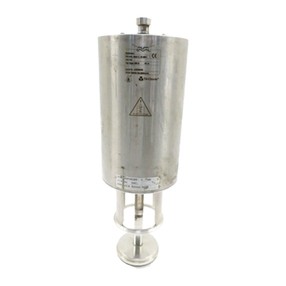
Alfalaval
Alfalaval Unique 7000 Series instruction manual
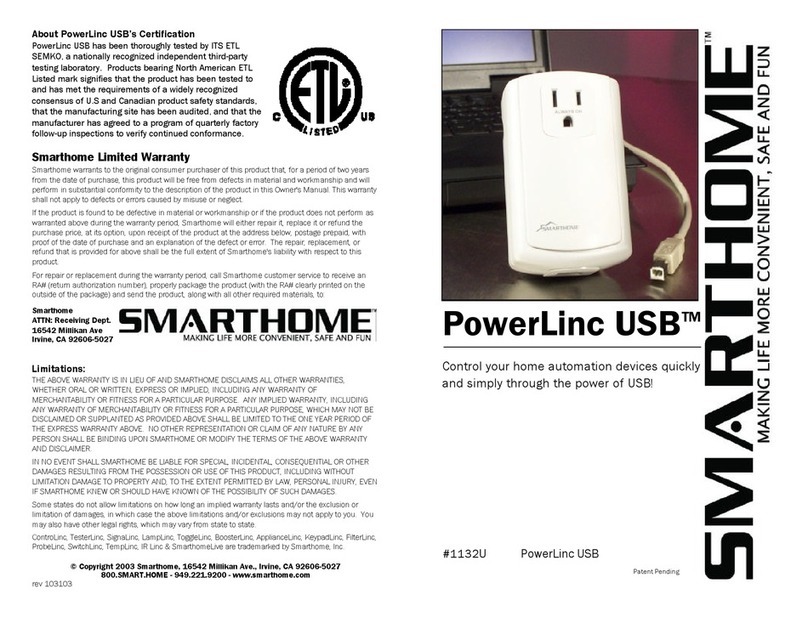
smart home
smart home PowerLinc USB quick start guide
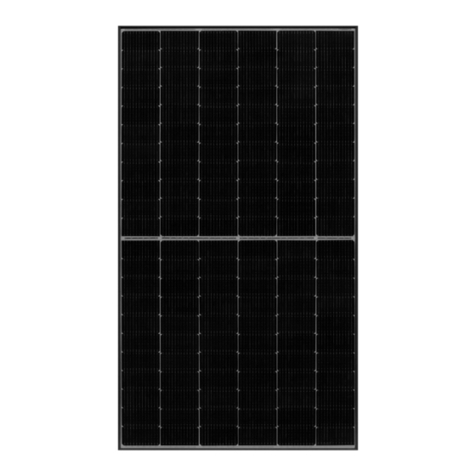
Qcells
Qcells Q.PEAK DUO ML-G10.X Series Installation and operation manual
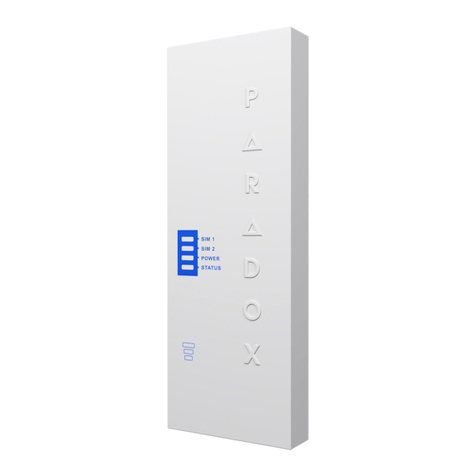
Paradox
Paradox PCS265LTE Installation and programming guide
